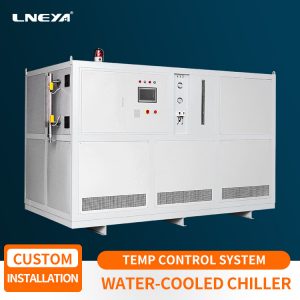Titanium reactor temperature control in daily chemical, pharmaceutical and chemical industries

The advantages and trends of titanium reactors in the daily chemical and pharmaceutical industries, titanium reactors will play a huge advantage in the future. Reaction equipment used to complete processes such as sulfonation, nitration, hydrogenation, alkylation, polymerization, condensation, and many other processes of organic dyes and intermediates. It has excellent properties such as super corrosion resistance, non-magnetic, high temperature resistance, pressure resistance, and bio-affinity.
The titanium reactor needs special attention during operation, otherwise it is prone to damage and causes unnecessary production stoppage. The chemical industry uses a large number of titanium reactors. Due to the corrosiveness of the medium, the hot and cold reaction conditions, transportation, use, and human-made problems, the enamel layer is easily damaged and affects the entire production. If a large area falls off, it needs to be returned to the factory for a new one. enamel.
The temperature of the reaction body in the kettle should be cooled at 110 degrees, and the temperature difference between the temperature medium and the reactor should not exceed 90 degrees to avoid cold shock damage to the equipment. This requires the use of high-precision temperature control equipment. Our LNEYA heating and cooling circulators are suitable for temperature control of most reactors.
The structure of the reactor is basically the same. In addition to the reactor body, there are transmission devices, stirring and heating (or cooling) devices, etc. Thus, the reaction temperature can be uniformly controlled. The temperature control of the reactor depends on the temperature change of the heat transfer oil in the jacket of the reactor to control the temperature in the reactor.
The heating, cooling, and temperature control systems of the reactor are sealed, no oil mist is produced at high temperature, and no water vapor is absorbed at low temperature. It is a heat transfer medium that can control the temperature of -100-200 degrees and the cooling capacity of 1kW-80kW in the same machine.
Closed liquid circulation system with expansion vessel. The expansion vessel is insulated from the liquid circulation and is only connected to the machinery and does not participate in the liquid circulation. Regardless of the temperature in the liquid circuit, the medium in the expansion vessel is below 60°C.
The working principle of our LNEYA dynamic temperature control system SUNDI series equipment is like this, and it is the best choice in the reaction vessel temperature control system in the industry.
Raccomandazioni correlate
-
Performance Characteristics of 30 HP Water Cooled Chiller
1050The 30p water cooled chiller is an industrial water chiller with a horsepower of 30 HP. The water-cooled industrial water chiller must rely on the cooling water tower for work, while the air-cooled industrial water chiller uses its own fan for coo...
Visualizza i dettagli -
Design and Test Technology of High Temperature Environmental Chamber Sales
12131. Temperature selection (1) The climatic zones of the region; Whether the product is exposed to the solar radiation environment near the heating device; Surrounding air, solar radiation and ways of heat transfer from heating devices to products;...
Visualizza i dettagli -
Punti di installazione delle criopompe nei frigoriferi criogenici
1216Nella costruzione di un frigorifero criogenico, la criopompa è un elemento indispensabile. Il produttore di congelatori a bassa temperatura LNEYA indica a tutti che la criopompa deve essere utilizzata in base ai requisiti al momento della sua installazione.
Visualizza i dettagli -
Specific conditions of high and low temperature test of EV (electric vehicle) battery
1248There are mainly 2 types of vehicles:1. Battery for pure electric vehicle2. Fuel cell, dedicated to fuel cell electric vehicles Thermal test: This test is performed to characterize the reaction of cells to the high-temperature environment. a) Adju...
Visualizza i dettagli
 Refrigeratori industriali LNEYA Produttore Fornitore
Refrigeratori industriali LNEYA Produttore Fornitore












